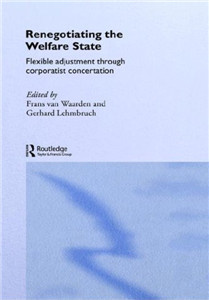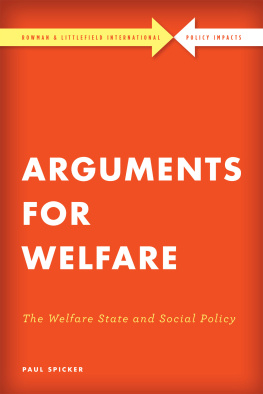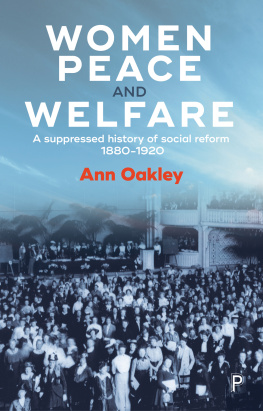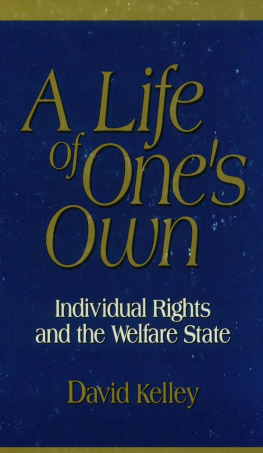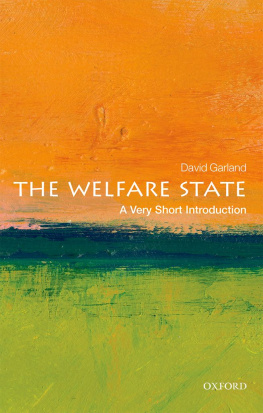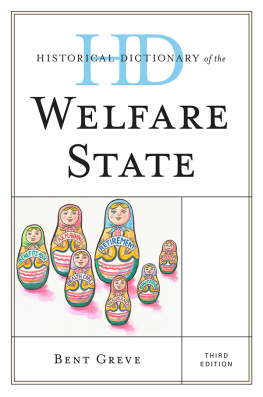Contents
List of illustrations List of contributors Acknowledgements | vii ix xi |
PART I Introduction | |
1 Renegotiating the welfare state through corporatist concertation: an introduction FRANS VAN WAARDEN | |
PART II Countries with traditions of corporatist concertation | |
2 The resurgence of Dutch corporatist policy coordination in an age of globalization ANTON HEMERIJCK | |
3 The societal and historical embeddedness of Dutch corporatism FRANS VAN WAARDEN | |
4 Austrian social partnership: just a midlife crisis? BRIGITTE UNGER | |
5 Nordic corporatism and welfare state reforms: Denmark and Sweden compared SVEN JOCHEM | |
6 Welfare state adjustment between consensual and adversarial politics: the institutional context of reform in Germany GERHARD LEHMBRUCH | |
7 Renegotiating the Swiss welfare state KLAUS ARMINGEON | |
PART III Countries without historical corporatist traditions | |
8 Bargaining Celtic style: the global economy and negotiated governance in Ireland GEORGE TAYLOR | |
9 The negotiator as auctioneer. Wage centralization and wage flexibility: a comparison of corporatist and non-corporatist countries COEN TEULINGS | |
PART IV European corporatism? | |
10 Renegotiating social and labour policies in the European multi-level system: any role for corporatist patterns? GERDA FALKNER | |
11 The renaissance of national corporatism: unintended side-effect of European economic and monetary union, or calculated response to the absence of European social policy? JURGEN GROTE AND PHILIPPE SCHMITTER | |
Index | |
9 The negotiator as auctioneer
Wage centralization and wage flexibility: a comparison of corporatist and non-corporatist countries
Coen Teulings
Introduction
In the United States, wage differentials have for many years been much larger than in most European countries. How can this be? Both world regions are highly developed and utilize similar technologies. Both regions have a highly educated labour force. Based on the usual theories of supply and demand, one would expect that the market mechanism would result in a comparable wage distribution in both regions. If no explanation can be found in supply and demand, the obvious step is to seek a solution in the sphere of institutions.
The institutions for wage formation in the United States and Europe are completely different. Despite the great variety within Europe, one difference dominates: in the United States wage negotiations are decentralized, often to the point where the individual employee must take on his employer directly, while in Europe, as well as individual negotiations, there exists a negotiation circuit on a sectoral, and sometimes even national, level. This double system of wage formation is known as corporatism.
Empirical research demonstrates that the existence of these institutions goes a long way towards explaining the difference in wage dispersion between Europe and the United States (Teulings and Hartog 1998: Chapter 1). This chapter presents a theoretical explanation of the role of these institutions.
Popular opinion holds that in Europe everyones salary is determined in central negotiations. The unions role is to compress wage differentials, reducing them to less than is justified on the basis of supply and demand. However, this view is not without problems. After all, salary level is not just the result of agreements between unions and employers organizations. Wages are also negotiated in other circumstances, such as during job interviews, on promotion and on the allocation of increments. Why should all those taking decisions on a micro level concern themselves with what takes place on a central level?
A good theory of corporatism should therefore be able to explain the working of a system in which decision making on the same matters takes place on several different levels. Such a theory will be set out in this chapter. The attraction of this theory lies in the fact that it is based on an image of labour relations which applies to both Europe and the United States. However, labour relations seem to be handled slightly differently in corpor-atist countries than on the other side of the Atlantic.
In order to set out this theoretical model, the following five misunderstandings will be discussed in the course of this chapter:
institutions are the opposite of markets;
the model of the American company union is a good point of reference for a theory on European corporatism;
wage contracts and collective labour agreements are primarily enforced by legal means;
corporatism is the opposite of competition and flexibility;
wage negotiations deal with the level of wages instead of the annual wage increase.
The chapter will end with an analysis of the political economy of corporatism. Why do the administrators of corporatist organizations behave as they do in practice?
Misunderstanding I: institutions are the opposite of markets
There is enormous confusion surrounding the precise definition of the term institution. It is sometimes taken to refer to bureaucracies (the march through the institutions), sometimes to laws (employment protection laws), and sometimes to something more elusive altogether (the family or the labour contract as institutions).
One important school of thought regards all allocation mechanisms other than that of the market mechanism as being institutions. Barter trade on markets comes into existence in freedom, without interference from any parties other than those actually trading. All other transactions are in one way or another steered, regulated or restricted by institutions. A striking example of this vision is the definition of Lazear (1994: 73):
I define institutions as those constraints, either formal or informal, that operate outside the price system.
This is how institutions are thought of from a simple neo-classical perspective. Welfare economics teaches us that a market economy left to its own devices leads to efficient allocation. Every control, regulation or restriction results in sub-optimality. We are familiar with the institutional explanation of unemployment which arises from this perspective: social security, employment protection and collective labour agreements are all institutions which undermine the smooth operation of the market mechanism and therefore lead to unemployment. A consequence of this vision is that institutions can only be maintained by means of force . According to welfare economics, at least one of the two parties benefits from a market relation. Only force can prevent the changeover to barter trade.
The vision of institutions at work here ties up with the ideas of North (1990) and with developments in modern game theory. In the world view emerging from the simple neo-classical model, everyone can trade goods or labour with an anonymous trade partner, to their own satisfaction. However, the very least that agents in an economy must know is where the trade in certain goods takes place, and how to make it known that you wish to buy or sell. If not everyone goes to the same marketplace, trade cannot take place, or only takes place with great difficulty. The common knowledge of all agents that transactions in an economy take place in a specific manner is therefore a crucial precondition for the functioning of a market economy. This type of common knowledge is what we refer to as institutions.
Next page
